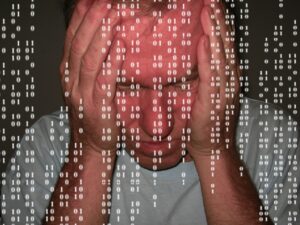Introduction
Are you struggling with a slow computer? Do you constantly feel frustrated by how much time it takes to get tasks completed? If your computer is gradually becoming slower and slower, there are steps you can take to diagnose and fix the problem. In this article, we’ll be sharing troubleshooting tips, proven techniques and helpful advice that will help you speed up your slow computer and bring it back up to optimal performance.
Dealing with a Slow Computer? Here’s What You Need to Do
The first step you should take when dealing with a slow computer is to switch to a few basic maintenance tasks. Begin by running an anti-virus scan, backing up your data, defragmenting your system and downloading the latest drivers. If your computer seems to be bogging down, you can also try a registry clean-up or boot-defragmenting the system.
Troubleshooting Tips to Help Speed Up Your PC
If your computer has been running slowly for a while and you’re having trouble getting it back to normal, it might be time for some troubleshooting. Your computer’s speed can be affected by faulty hardware, too many programs running in the background, or outdated software. To solve each of these potential problems, you can run a diagnostic tool to identify what’s causing the slow-down, and then make the necessary changes to get your computer running faster.
Identifying and Resolving Issues That Cause a Computer to Run Slow
In order to properly identify and resolve the underlying issues that are causing your computer to run slow, you’ll need to start by running a diagnostic test on your system. To do this, you’ll need to use a program specifically designed to identify the root causes of your computer’s slow performance. Most programs are designed to look for common performance issues such as outdated software, cables that are not functioning properly, or even viruses and malware.
Boost Your PC Performance With These Simple Fixes
Once you’ve identified potential problems, you’ll need to design a plan of action to address each of them and boost your computer’s performance. This might include downloading and installing the latest drivers, deleting unnecessary programs and files, disabling certain start-up programs, or even uninstalling and reinstalling certain programs. In addition, you should also make sure that your computer is free from viruses and malware.
Say Goodbye to Slow Computers By Following These Guidelines
In addition to identifying and resolving the underlying issues that are causing your computer to run slow, there are also a few tips and tricks that you can use to instantly improve your system’s performance. For instance, you could try increasing your RAM, removing any unnecessary peripheral devices that might be causing your computer to slow down, or running a registry cleaner to get rid of obsolete registry entries.
Enhance Computer Speed Instantly with These Proven Techniques
If you want to instantly enhance your computer’s speed without making any major changes, there are a few proven techniques you can try. For instance, you could try using a user interface with fewer animations, disabling any unnecessary startup programs, or using ReadyBoost to increase the system’s cache size. Additionally, you can also defragment your system to free up disk space and speed up data access times.
Diagnosing Symptoms of a Slow Running Computer – What To Do
Finally, if your computer is still running slow even after trying all of these tips and tricks, it’s time to try some more advanced troubleshooting techniques. The first step is to run a diagnostic test on your system to identify the root causes. This might include faulty hardware, outdated software, viruses, malware, etc. Once the root causes have been identified, you should then set up a plan of action to address each of them and speed up your computer’s performance.
Conclusion
With the right knowledge, you can troubleshoot and fix your slow-running computer with relative ease. Use the troubleshooting tips, proven techniques and helpful advice mentioned in this article to help you identify and resolve the underlying issues that are causing your computer to slow down, and start using your PC at peak performance again in no time.

